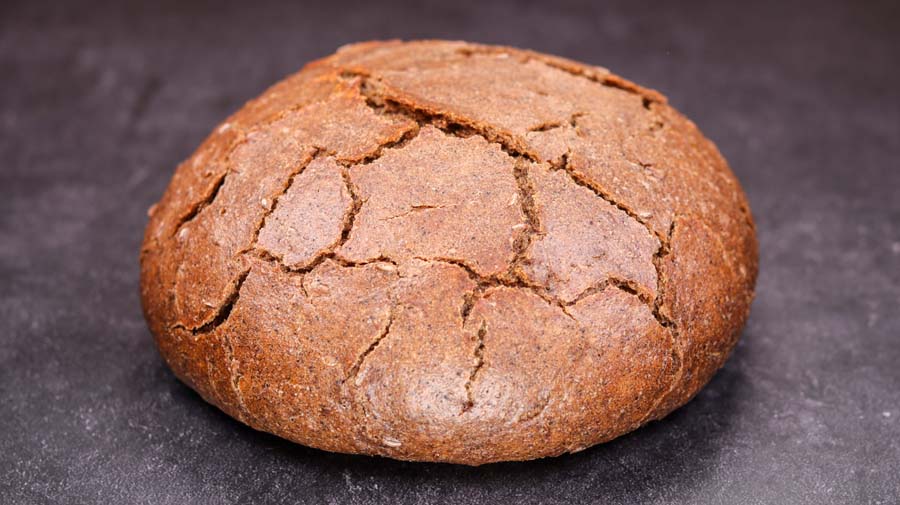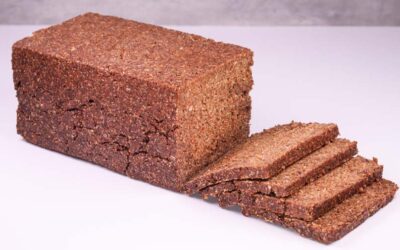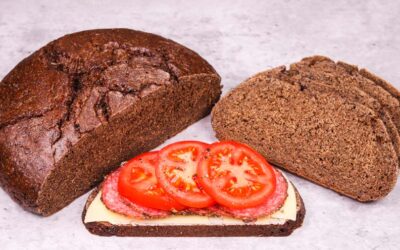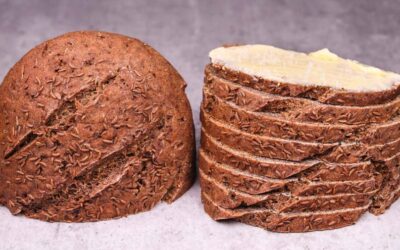There is something special about rye bread. It reminds me of home and of my childhood. This bread is essential to my culture. It comes in many shapes and sizes, and it is made with various ingredients; some of which add complexity of flavour and some of which make it sweeter or longer lasting.
Usually, rye bread is naturally leavened which means that it is made with a sourdough culture. It not only intensifies the flavour, but also prevents starch attack which is a process whereby the enzymes in rye flour convert starches to sugars in such high quantities that the resulting bread turns out sticky and unpleasant.
My recipe combines intensely flavoured ingredients, sweetening, scalding, and potato all of which work together to create a bread with a complex flavour, bouncy texture, and great shelf life. There is no need to worry about starch attack since I’m using white rye flour which is not as rich in the sugar creating enzymes.
The fermented rye malt is an ingredient which may not be easy to come by depending on where in the world you reside. I usually order it off eBay from Russia. It takes weeks to arrive, but it’s worth the wait. There is nothing quite like it and without it these types of dark rye breads will not be the same.
Watch the video down below for detailed instructions.
Ingredients
For the scald –
50g (1.75oz) mashed potato
100g (3.5oz) white rye flour
30g (1oz) fermented rye malt
10g (0.35oz) salt
10g (0.35oz) caraway seeds
30g (1oz) barley malt syrup
390g (13.75oz) boiling water
For the main dough –
5g (0.17oz) instant dry yeast or 6g (0.21oz) active dry yeast or 15g (0.53oz) fresh yeast
100g (3.5oz) white wheat bread flour
300g (10.6oz) white rye flour
To learn more about no-knead bread dough temperature control click here.
If you are using active dry yeast, then you may need to let it sit in the scald for 10 minutes before adding the other ingredients or else it could take a lot longer to raise the dough.
Method
- Cook the potato. Peel and cut the potato in large chunks. Cover with water, bring up to a boil, and cook for 25 minutes or until completely soft.
- Weigh out the required amount of potato in a large bowl. Place the potato water back onto the cooker to keep it boiling.
- Mash the potato, add the white rye flour, fermented rye malt, salt, caraway seeds, and syrup. Pour the boiling water over the ingredients and then whisk the mix until smooth. Cover and leave to cool down to room temperature.
- Add the yeast and white wheat bread flour to the scald. Mix well. Add the white rye flour and mix to a dough. *Desired dough temperature around 25C (77F). If your dough is warmer, then it will ferment more rapidly. If it is cooler, then it will take longer. Adjust fermentation time accordingly.
- Cover and bulk ferment for 1.5 hours.
- Tip the dough out on the table. Pinch off 20g of dough and place in a small bowl. Mix with 20g of water. This will be used as a glaze later.
- Shape the loaf and place it in a banneton or in a fabric lined bowl.
- Cover and final proof for 1 – 1.5 hours. *During this time pre-heat the oven to 180C (355F) fan on or 200C (390F) fan off. Also, pre-heat the baking vessel if you are using one.
- Invert the loaf on a piece of baking paper and brush it with the glaze.
- Place in the pre-heated pan and cover with a lid. Bake with the lid on for 30 minutes. Remove the lid and bake for 15 minutes. Finally, spray the loaf with water and bake it for 5 more minutes. If you don’t have a baking pan, then bake the loaf on a tray for 40 minutes, then spray it with water and bake for another 5 minutes.
Leave to cool down completely before slicing.
Keep in mind that the conditions in each kitchen are different, so fermentation times may vary for you. It is up to the baker to control the bread and react accordingly.
Your oven may be different too, so your baking time may vary.



